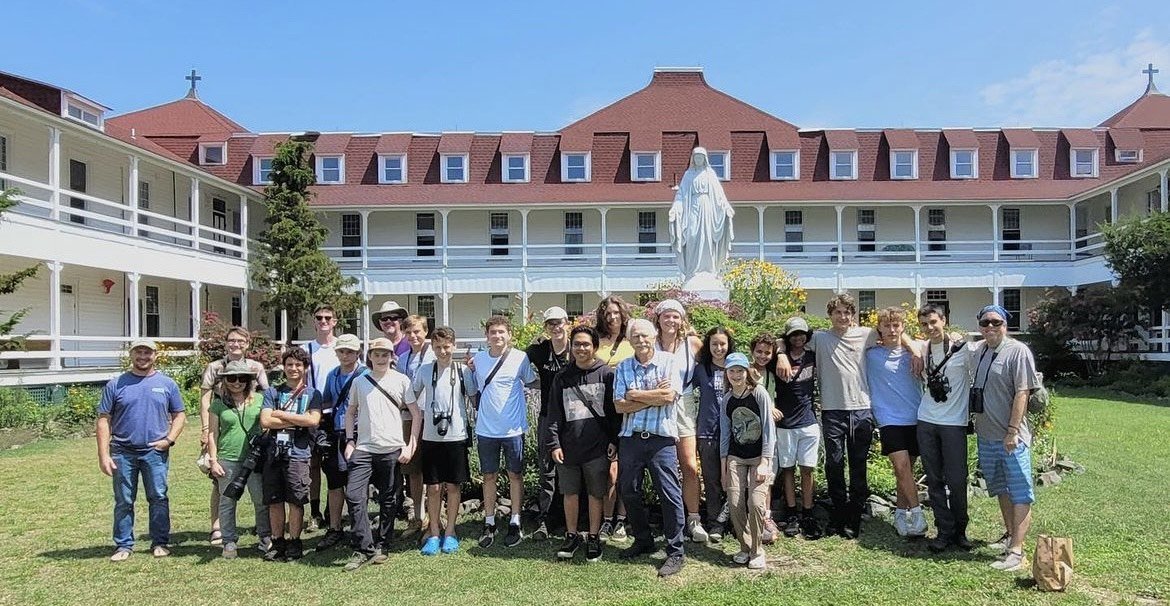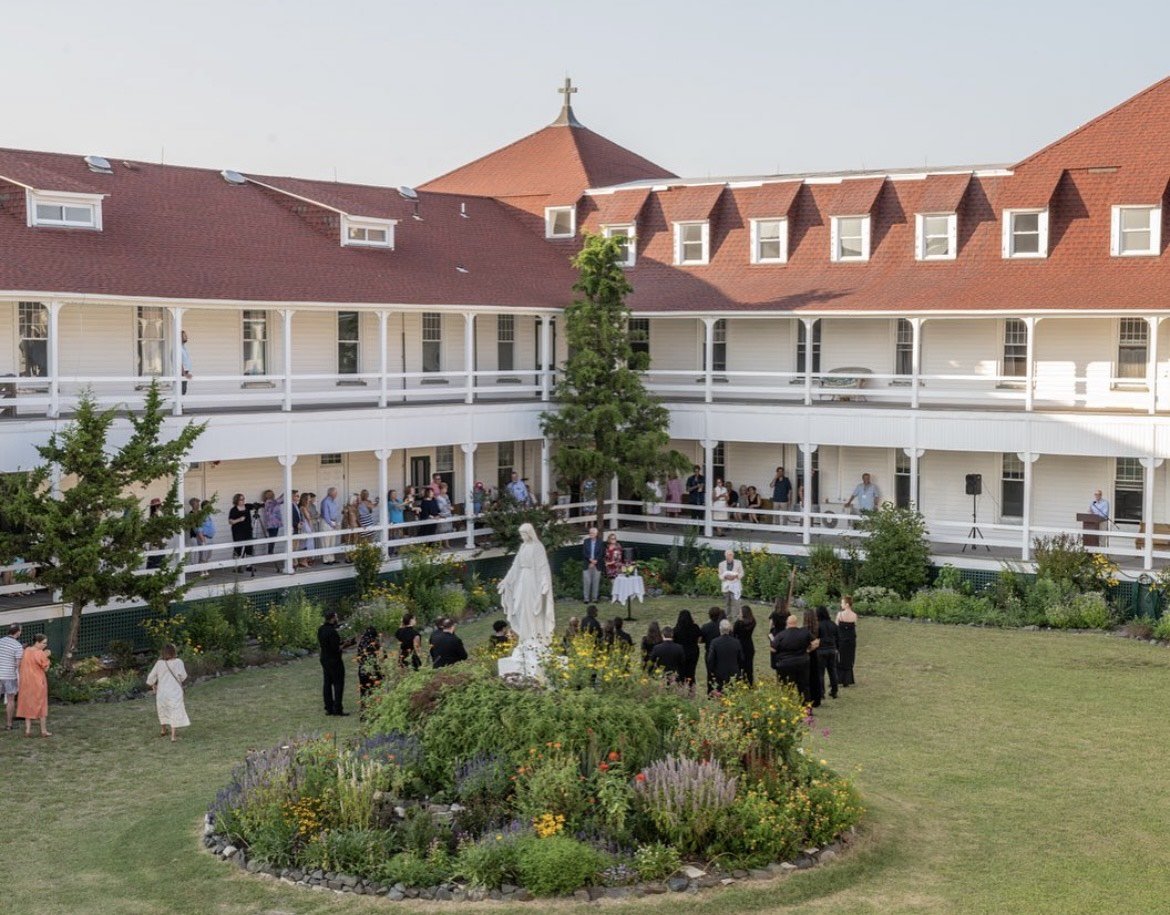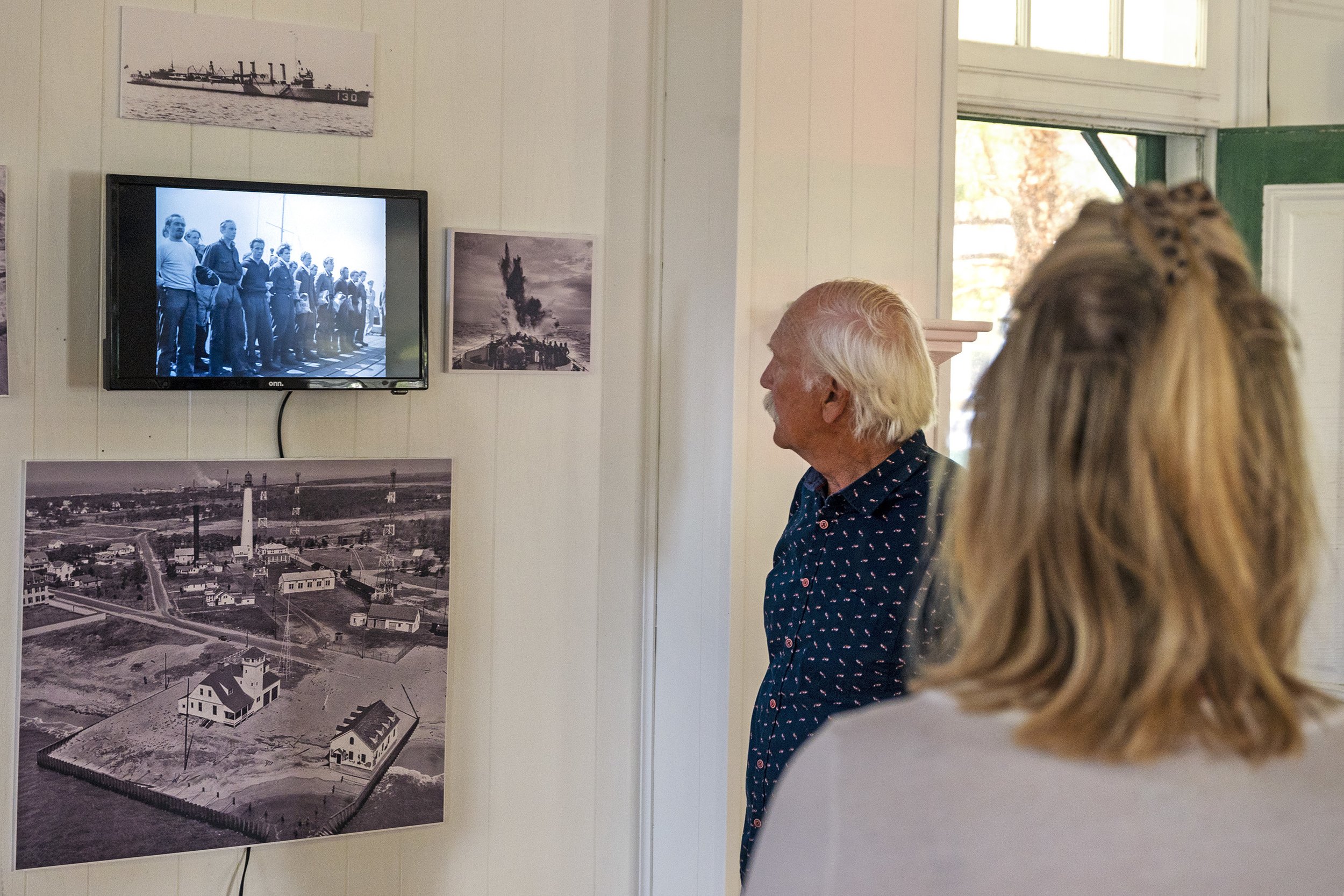A former retreat for nuns in Cape May has been transformed into an environmental science center
By David Matthau for Why.org.
A former retreat for nuns in Cape May Point, New Jersey, has been transformed into a science center that studies migratory patterns of butterflies, birds, crabs, and marine life.
At the start of the COVID-19 pandemic, the Philadelphia-based Sisters of St. Joseph were forced to close the St. Mary by-the-Sea Retreat House. As the health emergency dragged on, they decided to demolish the building and apply for Green Acres funding and preserve the 1.5 acre property. Longtime Cape May resident Bob Mullock, 74, had a better idea.
Looking to save what he described as “an absolutely gorgeous building,” Mullock spoke to the sisters and proposed using the grounds as an environmental center.
“We had those discussions for a good period of time, the sisters are tough negotiators,” he said. “But I’ve always had great respect for them and we ultimately reached an agreement.”
Cape May Point Arts and Science Center President Bob Mullock with the youth American Birding Association Camp for Delaware Bay.
Mullock created a non-profit organization, and the historic building at the bottom tip of Cape May, between the Delaware Bay and the Atlantic Ocean was purchased in April of 2022 for $5.5 million. Then came the conversion of the once private nuns’ retreat home into the Cape May Point Arts and Science Center.
“We’re right in the middle of the Atlantic flyway, all types of birds get funneled down the peninsula,” Mullock, who serves as president of the science center, said.
A rich history
The retreat has a storied history dating back to the early 1800s, when it served as a landmark for enslaved people escaping Delaware, Maryland, and Virginia.
“On moonless nights people would escape from the Delmarva Peninsula, row boats across the Delaware Bay, and then they would land on the site, located next to the Cape May Lighthouse,” he said. “That was the guiding light to not drift out in the ocean.”
The Arts and Science Center is close to the Cape May Point Lighthouse. (Courtesy of Aleksey Moryakov)
Mullock said the 38,000-square-foot science center is three stories high with 135 different rooms, and it was originally constructed as the Shoreham Hotel, which attracted famous visitors and tourists from all over the country.
“President Harrison stayed here and his wife stayed here, his wife actually had an art show here,” he said.“It was thought that because of its location that this was the healthiest air you could breathe.”
The Arts and Science Center grounds host different events to help raise funding for different research projects. (Courtesy of Frank Scott)
In the early 1900s, the hotel was converted into a senior home. Then in 1909, the Philadelphia-based Sisters of St. Joseph bought the property and used it as a retreat home for nuns until the COVID-19 pandemic hit. For a brief period, during World War II, the United States Army also used the building to monitor ship movements.
Mullock said this unique location allows researchers to focus on the relationship between marine life and avian life, and how they intersect with each other.
The science center, which officially opened in June this year, currently has 15 different projects focusing on the migration of species such as monarch butterflies.
“We put transmitters on them and then we can follow their migration paths,” he said.
The Arts and Science Center uses tracking devices to monitor the migration patterns of birds and horseshoe crabs. (Courtesy of Tom Gralish)
A hawk, which researchers nicknamed Dave, was tracked by the group Cellular Tracking Technologies from New Jersey all the way south to Georgia.
“We thought it was going to stay there but it continued on through the [Florida] Keys and all the way to Cuba, and then it came back and is now above Quebec,” Mullock said.
Several organizations are working at the facility, including the New Jersey Audubon Society, the Nature Conservancy, and the Littoral Society, a conservation and research group focused on marine coastal habitats.
Tom Carroll, the incoming president of Cape May MAC (Museums, Arts, and Culture), said many visitors come to Cape May to enjoy nature and like to get away from beachfronts lined with motels and typical tourist attractions.
He said turning the St. Mary by-the-Sea Retreat House into an environmental science center is a much better fit for Cape May than some glitzy new condo complex.
Part of the Center serves as a museum. (Courtesy of Tom Gralish)
“It’s a beautiful old building, it’s kind of the first thing you see as you come across the bay, framed with the lighthouse right behind it,” he said. “It’s really part of the big piece of history about the founding of Cape May Point. If they had torn that down they never ever could have had the number of rooms and dining and events, things that they have on that property now.”
Mullock said the Arts and Science Center, which relies on donations to fund several ongoing studies, also features an area that’s been transformed into a museum. The plan is to rent out the space for weddings and other events.
See the original article here.





